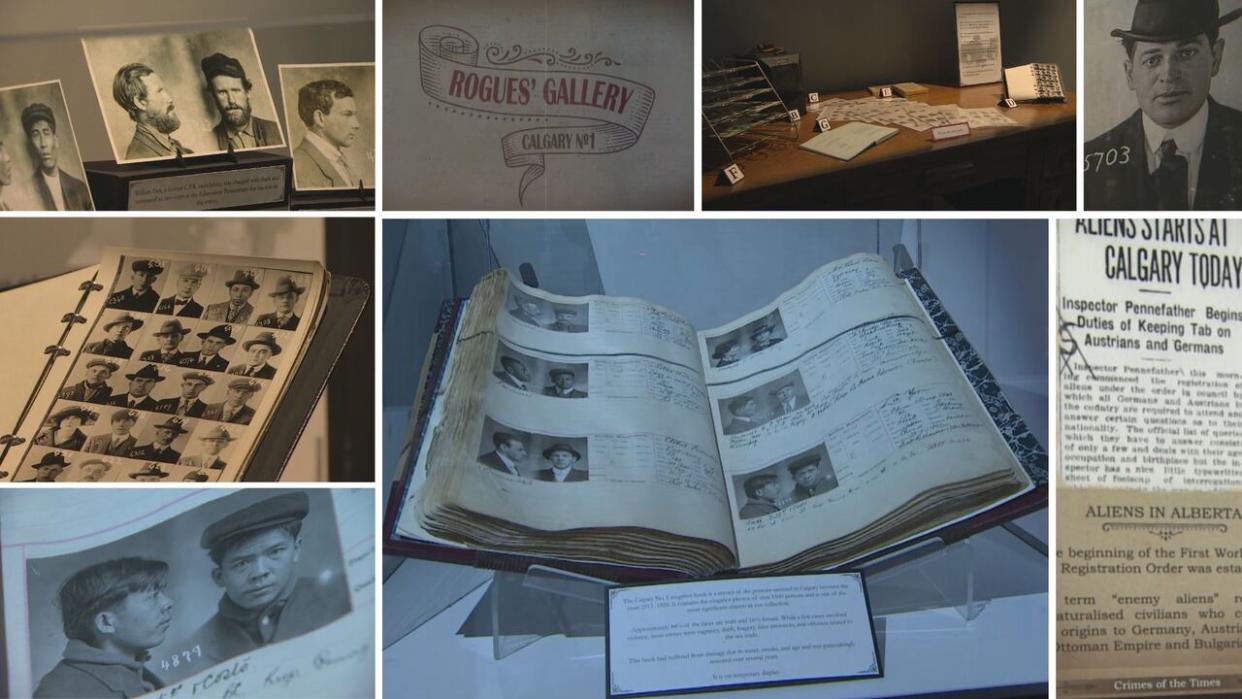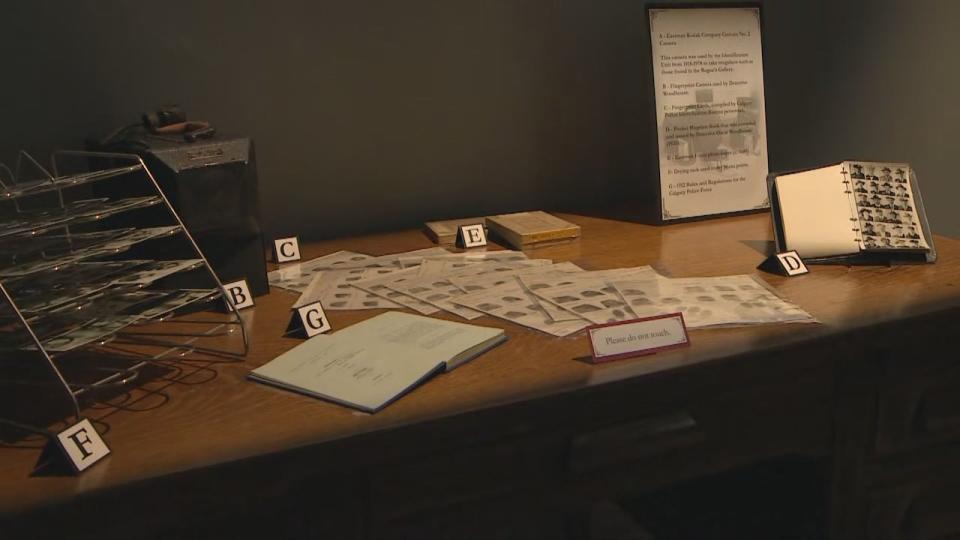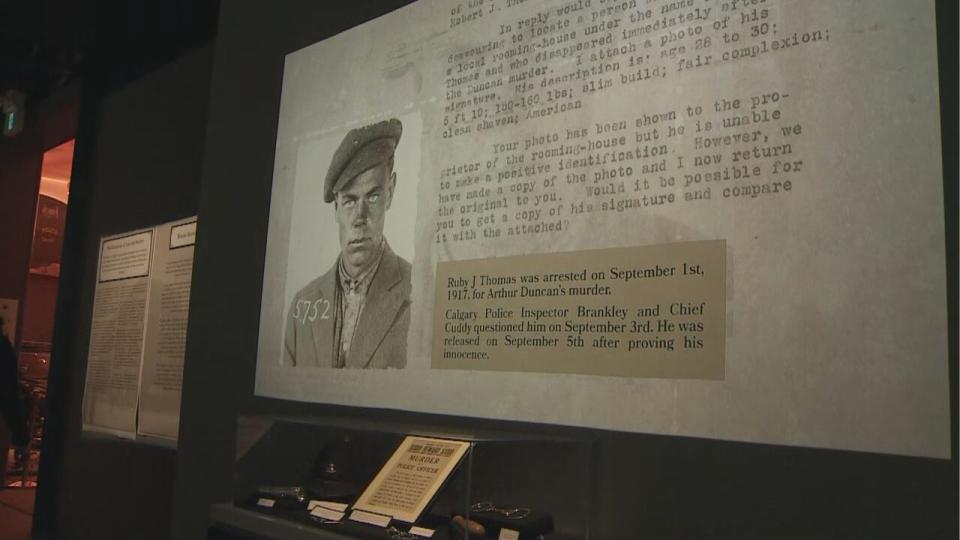IN PHOTOS | Exhibit showcases mug shots and stories from Calgary's 'wild west' criminal history

A new exhibit that examines the stories behind hundreds of historical mug shots is opening this week, giving Calgarians a chance to explore the past century of policing, outlaws and crime in the wild west.
The exhibit, "The Rogues' Gallery," opens to the public on Friday at the YouthLink Calgary Police Interpretive Centre in the city's northeast.
And the most anticipated part of the exhibit is the Calgary No. 1 Mug Shot Book, which features a collection of roughly 2,700 people. This book was the first of its kind back in 1913.

(Mike Symington/CBC)

(Mike Symington/CBC)

(Mike Symington/CBC)
In 2018, YouthLink acquired the book. It was anticipated that it would only take two years to restore and preserve, but that process actually ended up taking five years.
"And that's as a result of 100 years of mishandling, misuse, smoke damage, water damage. And [the book is] something that would have been heavily used and handled. The pages would have been flipped," said Stephanie Woodridge, YouthLink's historical collections manager.
"Over 100 years, it really adds up."
She believes it's the most valuable part of their entire collection.

(Mike Symington/CBC)

(Mike Symington/CBC)
The wear and tear of the book is because police used to carry the photos with them in order to identify people.
"It was ushering Calgary police into this new era of criminal identification," said Tara Robinson, executive director of YouthLink Calgary Police Interpretive Centre.
She says that the name of the exhibit — "The Rogues' Gallery" — is a historical reference, coming from a newspaper article published in 1913 that referred to the Calgary mug shot book by that same name.

(Mike Symington/CBC)
What's more, the exhibit also acts as a timeline of Calgary's laws and police force.
"This exhibit shows how the Calgary police has evolved significantly over the past 100 years," Calgary police acting chief Katie McLellan told reporters.
"Some examples include the first permanent full-time police woman, [who] was hired by Calgary police in 1946. Today, there are 491."
McLellan, the first woman to be promoted to the rank of superintendent and the rank of deputy chief with Calgary police, helped unveil the exhibit on Thursday.

(Mike Symington/CBC)

(Mike Symington/CBC)
In order to learn the details behind the historical outlaws and their mug shots, Woodridge says YouthLink's research team went through fingerprint cards to find names.
Then, researchers matched the names with the mug shots via unique identification numbers.
"For every single one where we could match it to a mug shot, we would just get that much more information," she said.
"So then we'd start combing through the newspaper to find out the story. What happened in court? What did the judge say? What did the police who brought the person in say when they brought them in? There's so much colour in those historic newspapers."

(Mike Symington/CBC)
"In Calgary, we have this colourful history. We see a lot of this stuff, like the wild west in the movies, but that stuff happened here too," said Woodridge. "It's really important that Calgarians know that."

(Mike Symington/CBC)
She says her favourite part of the book was exploring the leave-town orders, an antiquated justice practice that no longer exists in Calgary.
"People would be told, just get out, that's your punishment," she said. "And when we think of today … you can't just tell people to get out of town. But that was, you know, justice dispensed in 1913, 1914, 1915."

